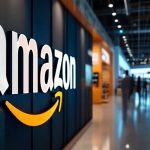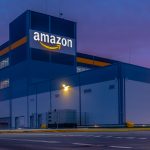

Amazon Prime Day sales surge to $23.8 billion as retailers compete for back-to-school shoppers during extended 96-hour event
Key Takeaways
- Amazon Prime Day generates $23.8 billion in projected U.S. online spending during the extended 96-hour event, representing a 28.4% increase from the previous year according to Adobe Analytics.
- Over 50 million people now identify as content creators in 2022, contributing to a multi-billion dollar industry that reshapes traditional media consumption patterns.
- Buy Now, Pay Later usage rises to 8% of online spending during major retail events, up from 7.6% last year, as consumers seek flexible payment options amid economic uncertainty.
Introduction
The digital economy reaches new heights as Amazon extends Prime Day to 96 hours in 2025, driving unprecedented online spending while content creators fundamentally alter media consumption patterns. This convergence of retail innovation and creator economy growth demonstrates how digital platforms reshape traditional business models across industries.
The retail event projects massive consumer engagement, with YouTube and other platforms simultaneously hosting millions of creators who influence purchasing decisions. These parallel trends underscore the digital marketplace’s expanding influence on both commerce and entertainment sectors.
Key Developments
Amazon’s decision to extend Prime Day from its traditional two-day format to 96 hours reflects intensifying competition from retail giants Walmart and Target. The extended timeframe aims to capture more consumer spending during the back-to-school season, a critical period for retailers.
The creator economy simultaneously reaches new milestones, with over 50 million people identifying as content creators in 2022. This surge democratizes content production across platforms like YouTube, TikTok, and Instagram, enabling smartphone-equipped individuals to reach global audiences.
Educational institutions respond to this growth by launching programs designed to nurture digital creators. These initiatives provide essential skills and tools for navigating the competitive landscape, legitimizing content creation as a viable career path.
Market Impact
Amazon shares trade marginally higher on Monday, reflecting bullish retail sentiment ahead of the extended Prime Day event. The projected $23.8 billion in U.S. online spending represents a significant jump from last year’s $14.2 billion during the comparable period.
Adobe Analytics describes the event’s economic impact as equivalent to “two Black Fridays,” emphasizing the massive consumer draw. Clothing categories expect the deepest discounts at 24%, up from 20% last year, while electronics discounts remain strong at 22%.
The creator economy’s influence appears in advertising revenue shifts, as viewers now spend over six hours daily on content platforms. This consumption pattern forces traditional media outlets to compete for advertising dollars that increasingly flow toward digital platforms.
Strategic Insights
Retailers implement advanced technologies including generative AI for personalized shopping experiences, while Buy Now, Pay Later options expand to accommodate cautious consumer spending. BNPL usage reaches 8% of overall online spending, reflecting changing payment preferences.
The competition intensifies as Walmart and Target launch concurrent discount events that run longer than Prime Day itself. Stocktwits data shows bearish sentiment for Walmart while Target maintains bullish positioning, indicating varied market expectations.
Content creators develop new monetization strategies through advertisements, sponsorships, and direct audience contributions via crowdfunding and subscription services. This economic potential transforms content creation from hobby to profession for many participants.
Expert Opinions and Data
Adobe’s analysis, based on 1 trillion visits to U.S. retail e-commerce sites covering 100 million SKUs across 18 product categories, provides comprehensive market insights. The data reveals consumers “trade up” to higher-ticket electronics and appliances while seeking affordable alternatives in home and garden categories.
Industry analysts predict significant increases in back-to-school merchandise, with backpack and lunchbox sales rising 225% and kids’ apparel increasing 220% compared to June 2025 daily averages. These projections highlight seasonal shopping pattern shifts.
Market observers note that global trade uncertainties and unpredictable tariff policies contribute to cautious consumer spending, prompting retailers to offer deeper discounts to maintain sales volumes during this critical period.
Conclusion
The digital economy’s dual expansion through retail innovation and creator platforms demonstrates technology’s transformative impact on traditional business models. Amazon’s extended Prime Day strategy and the creator economy’s continued growth both reflect adaptive responses to changing consumer behavior.
These developments signal a fundamental shift in how commerce and entertainment industries operate, with digital platforms increasingly determining market dynamics and consumer engagement patterns across multiple sectors.





